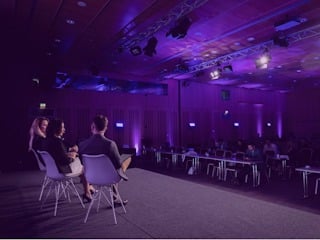1. Make an inventory of the customer journey
Outcome: Information about your customer journey
Tools: Journey mapping tools
Disciplines: UX, data
The first step is to map the customer journey. Which touchpoints do your consumers encounter along the entire journey, both offline and online? Which channels do you use online? What are your KPIs, business goals and user goals?
2. Make everything measurable
Outcome: A measurable journey
Tools: Analytics tools, user feedback tools
Disciplines: Data
By this point, you should have a clear set of user goals, business goals and KPIs. Now it's time to convert these into measurable units, such as CES (customer effort score) and conversions. This is an important step because without measurable goals, you can’t see whether your optimisations are actually improvements. You also need to analyse continuously during the CXO process, which means you need to ensure you have the right tools to collect data, such as qualitative user feedback tooling and Analytics.
3. Identify the problem
Outcome: A clear definition of the problem
Tools: Workshops
Disciplines: UX, data
Your online tools, such as Analytics, provide a good starting place to find points for improvement. But look further than this, too. Customer service, offline sales points and qualitative input from surveys, for example, provide information that is at least as useful. Based on these inputs, you can define a number of pain points. Don't be too ambitious to start with – just identify a number of hidden issues and focus on fixing those. Your KPIs indicate where you can gain and you should act based on this.
4. Make a prototype and test
Outcome: Validated prototype
Tools: A/B test tools, qualitative feedback tools
Disciplines: UX, data, content
So, you’ve identified the problem. Now it’s time for some initial solutions. Bring in the right skills, build a prototype and test it to destruction. Learn from the results, optimise your prototype and, if you need to, test it again.
5. Begin the creative process
Outcome: Validated proof of concept or creation
Tools: Depends on the prototype
Disciplines: UX, data, content, development
As an optimal solution emerges from your testing, you develop the prototype into a stable variant that conforms to all the technical requirements. But beware if you think this is the end of the story, because even once your optimal solution is live, you need to continue to test and improve it. This requires having the time, space and process within your organisation to do so.














